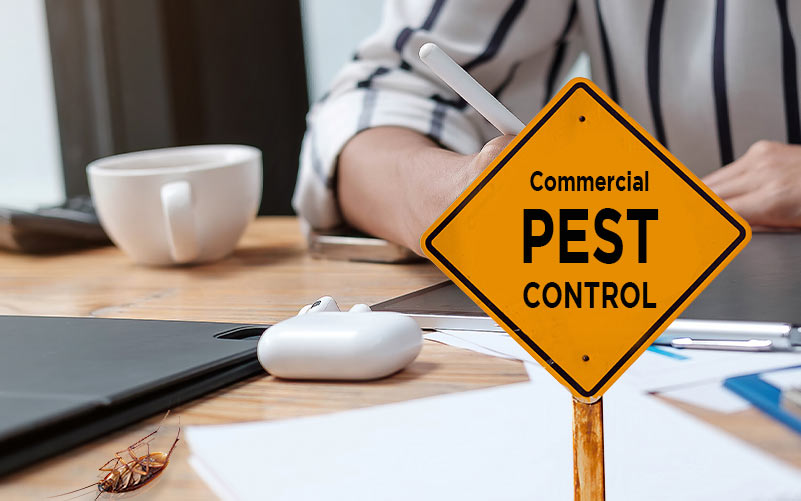Experienced A1 Exterminators Charlotte NC - Fast and Reputable Solutions
Wiki Article
Bed Pest Treatment Failure: Comparing Chemical Vs. Non-Chemical Solutions
In the realm of insect control, especially when managing the persistent issue of bed pests, the selection between chemical and non-chemical treatment options can be a pivotal one. Both approaches supply distinct benefits and drawbacks, influencing variables such as performance, security factors to consider, and general cost. By analyzing the nuanced information of each technique, a more clear understanding of which path to go after in resolving a bed bug infestation can be achieved.Effectiveness of Chemical Treatments
Chemical therapies for bed pest infestations have been commonly recognized for their potent and rapid efficacy in removing these pests. When considering the performance of chemical treatments, it is crucial to understand that they can offer a thorough and fast option to a bed pest trouble. Professional pest control operators typically depend on insecticides to target bed bugs at different stages of their life cycle, including adults, eggs, and fairies. These chemicals usually function by interrupting the bed pests' nerve system, bring about paralysis and eventual death.In addition, chemical therapies have the benefit of offering residual impacts, implying that they can continue to eliminate bed pests also after the preliminary application. This recurring activity is especially useful in combating any kind of possible re-infestations. In addition, the quick action of chemical therapies can bring relief to individuals dealing with extreme bed pest infestations, permitting them to reclaim control of their home promptly.
Security Interest In Chemical Solutions
One crucial aspect that requires cautious consideration when utilizing chemical remedies for bed bug treatment is guaranteeing the safety and security of passengers and the setting. While chemical treatments can be effective in eliminating bed bugs, they may posture risks if not handled correctly. Among the primary safety worry about chemical remedies is the possible harm they can cause to human health and wellness. Exposure to certain chemicals used in bed insect treatments can result in breathing problems, skin inflammation, or other adverse responses, particularly in individuals with pre-existing conditions or level of sensitivities. Additionally, inappropriate application or dose of chemical pesticides can result in toxic residues remaining in the cured location, posing long-lasting wellness dangers to residents.Moreover, the ecological impact of chemical solutions is an additional considerable consideration. Some chemicals utilized in bed insect therapies may be unsafe to advantageous pests, wild animals, and environments if they leach right into the soil or water systems. It is necessary to make use of chemical treatments judiciously, complying with security guidelines, and considering much less toxic options to reduce these dangers and make certain the effective critter control and safe management of bed pest problems.
Advantages of Non-Chemical Approaches
Considering the possible security problems and environmental effect related to chemical solutions for bed pest treatment, checking out non-chemical methods provides an appealing option with a number of distinctive advantages. Non-chemical techniques use a more secure alternative for houses, especially those with people, family pets, or kids conscious rough chemicals. These approaches remove the dangers of exposure to toxic substances, reducing the possibility for negative health effects. Additionally, non-chemical treatments are eco-friendly, as they do not add to air or water air pollution, making them a lasting selection for bug control.Additionally, non-chemical services can be efficient in targeting bed insects, consisting of hard-to-reach areas where chemical therapies might not penetrate - A1 charlotte pest control companies. Approaches such as warm therapy, vacuuming, vapor cleansing, and cushion encasements supply comprehensive removal without the use of damaging chemicals.
Limitations of Non-Chemical Treatments

Additionally, non-chemical therapies often need several applications to attain successful removal. This can be time-consuming and might not always ensure total elimination of all bed pests and their eggs, particularly in hard-to-reach or concealed areas.
In addition, the success of non-chemical treatments heavily relies upon correct execution and thoroughness, which can be testing for individuals without expert competence. Insufficient application of non-chemical approaches might result in insufficient elimination, causing your pest control relentless problems and the need for extra treatments.
As a result, while non-chemical treatments have their advantages, it is necessary to acknowledge these restrictions and consider them when figuring out one of the most efficient method for managing bed pest problems.
Price Comparison: Chemical Vs. Non-Chemical Options
Given the constraints linked with non-chemical treatments, a necessary aspect to examine in the context of bed pest management is the price comparison between chemical and non-chemical alternatives. In comparison, non-chemical treatments like warmth treatment or vapor can be much more costly, with prices varying from $1,000 to $6,000 for an entire home. While the preliminary expense of chemical therapies may seem lower, several therapies might be required to fully eradicate the invasion, possibly raising the total cost.Verdict

Taking into consideration the potential safety and security concerns and environmental effect linked with chemical remedies for bed pest treatment, discovering non-chemical strategies provides an encouraging choice with several distinct benefits.Provided the restrictions connected with non-chemical therapies, an essential aspect to assess in the context of bed insect administration is the expense contrast between chemical and non-chemical options. In contrast, non-chemical treatments like heat treatment or heavy steam can be more pricey, with expenses varying from $1,000 to $6,000 for a whole home. While the initial cost of chemical treatments might appear lower, several treatments may be needed to fully eradicate the infestation, possibly raising the total price.In conclusion, when contrasting chemical and non-chemical bed pest therapy options, it is essential to consider performance, security, benefits, limitations, and price.
Report this wiki page